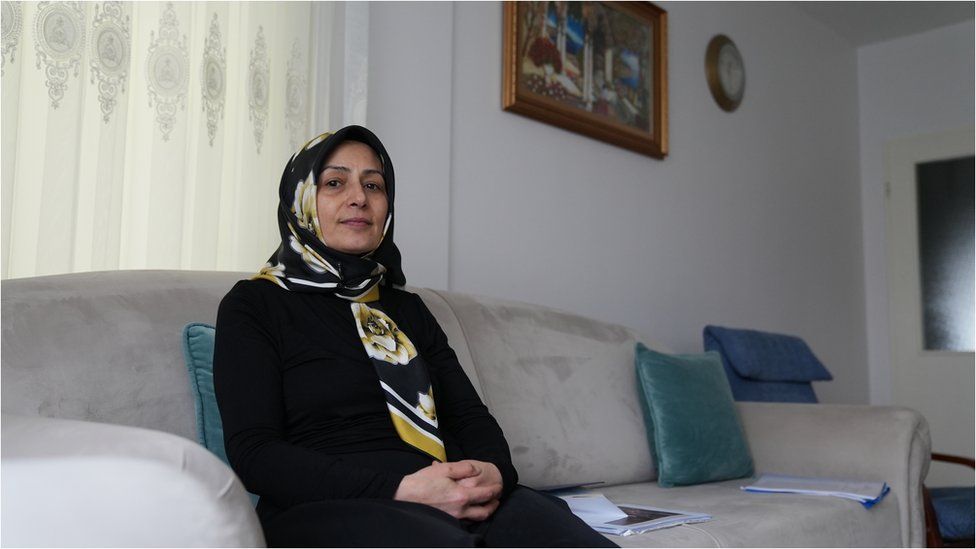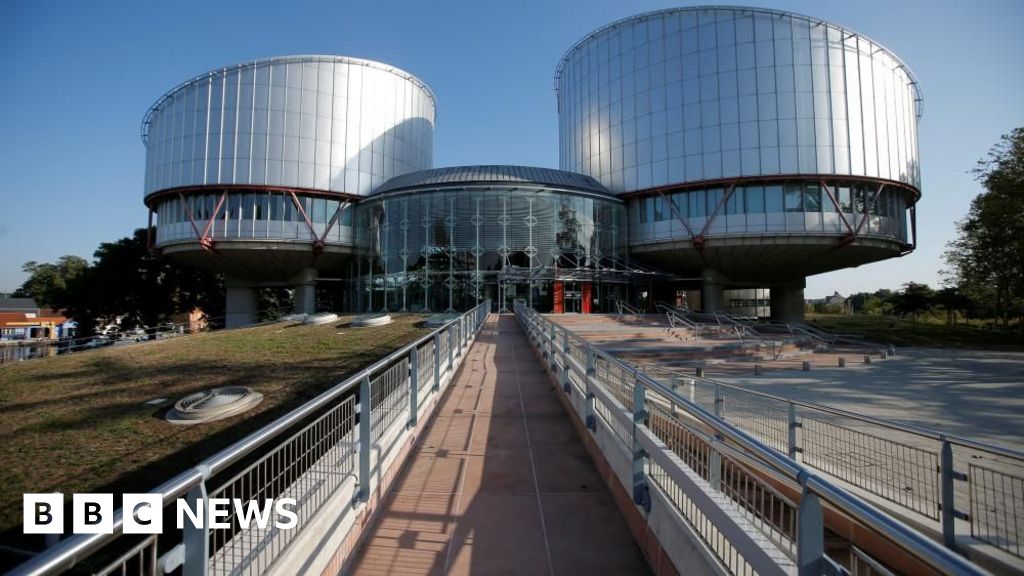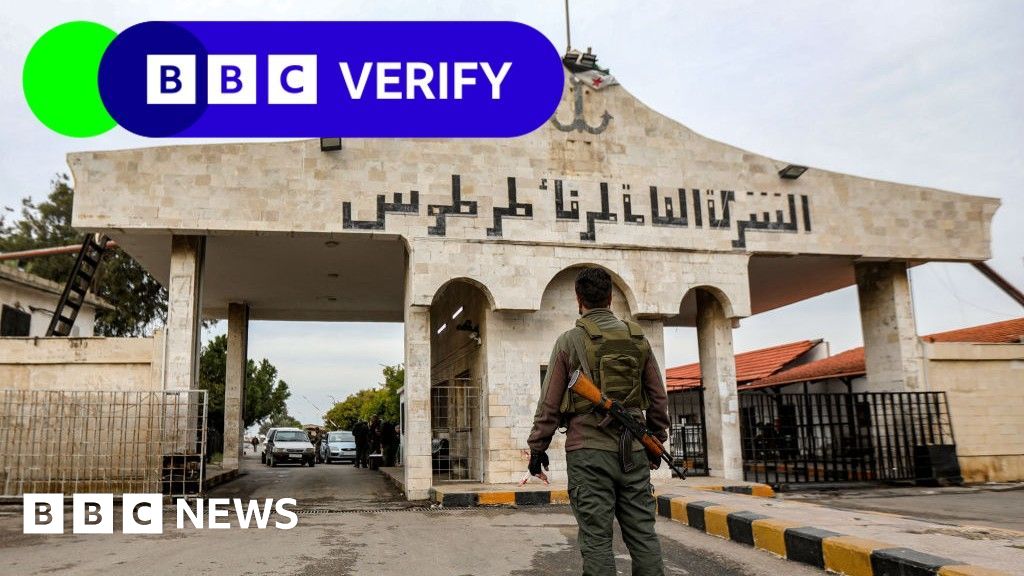ARTICLE AD BOX

Nurgül Göksu says she used to be a "normal" housewife before the quake struck
By Esra Yalçınalp in Istanbul and Osman Kaytazoglu in London
BBC Turkish
On 6 February 2023, a huge earthquake hit southern Turkey, killing more than 55,000 people.
It has now become clear that scores of lives could have been saved if building regulations had been observed.
One mother has made it her mission to find out what caused the building where her loved ones lived to collapse.
Before the earthquake struck Nurgül Göksu was, as she says, a normal housewife. She loved cooking, with "içli köfte", a traditional dish of meatballs, one of her favourite recipes.
She lived on the outskirts of Istanbul. Her 31-year-old son, Ahmet Can Zabun, married, with a young baby, lived in the south-eastern city of Kahramanmaras.
Ahmet Can wasn't Nurgül's only child, but as her oldest son whom she had as a teen mum, their relationship was special.
She put him through university and was proud of what he achieved. Both Ahmet Can and his wife Nesibe were lawyers. Nurgül herself never went to university, and had to finish school through an external degree.
When the quake hit Kahramanmaras, at least 7,000 buildings in the city collapsed, including Ahmet Can's.
Nurgül dashed to the city to search for her son, his wife and their child - or, as she puts it, her "three children".
Ahmet Can, his wife Nesibe and their baby daughter Asude were killed in the earthquake
While many buildings in Kahramanmaras had been destroyed in the earthquake, the area where Nurgül's son lived didn't seem to have been affected as badly.
Much of the neighbourhood was barely damaged. But his residential block, ten storeys high and known as the Ezgi Building, was one of very few which were flattened.
Similar discrepancies occurred in other quake-affected areas too. Many in Turkey started asking why some buildings collapsed and others did not, even if they had been situated right next to each other and were of similar height, age and construction style.
Nurgül waited as the rescue teams trawled through the ruins of the Ezgi Building.
Eight days later, the bodies of Ahmet Can, his wife Nesibe and their baby daughter Asude, Nurgül's granddaughter, were found.
Baby Asude was only six months old.
"Losing not just one but three children is truly hard," says Nurgül.
She frequently shares family photos on social media accounts she created after the disaster.
"I didn't want them to die in vain and for me to just forget about them," says Nurgül.
In total, 35 people died in the collapse of the Ezgi Building. Only two survived.
The Ezgi Building in Kahramanmaras collapsed when the earthquake hit - while many other buildings around it remained standing
Following the loss of her family, Nurgül decided to get to the bottom of why her son's building collapsed while others didn't. But she needed evidence and expert knowledge.
She spoke to local civil engineers and construction experts. She learnt how to find "before" and "after" photos online and began to understand building regulations and what processes were required to approve any alterations.
Then, in June last year, she came across a BBC Turkish video on YouTube, made about the collapse of one building in the city of Izmir following an earthquake in 2020.
Nurgül messaged us on social media asking for help analysing the collapse of the Ezgi Building.
We stayed in touch with her for months, while she continued to investigate whether alterations made to the buildinghad been done correctly.
We used graphics to illustrate her findings.
Evidence that kitchen fans (highlighted in red) were cut into the supporting walls was found among the rubble
"I tried to find as much evidence as I could at the place where I lost my child," Nurgül says.
"It shouldn't have been my responsibility. But it seems that had I not done it, we wouldn't have found anything."
Nurgül found out that in many quake-hit areas the investigations, opened after claims of violations of building regulations, were being closed due to insufficient evidence.
She didn't want this to happen to her own investigation, so she gave numerous TV interviews to publicise her case. Despite not having been a keen social media user before the earthquake, she also opened an Instagram account about the Ezgi Building, trying to gather information from other families of those who died and building experts.
Nurgül stressed that the prosecutor could have used public records to gather evidence about the way the building was initially built.
However, she wanted to make sure all parties responsible for the building's collapse would be brought to justice - which was why she focused on gathering evidence of how the restorations and alterations to the building had been carried out.
Watch: Survivors of the earthquake in Syria still sleep in a tent
When the prosecutor's office opened an inquiry and commissioned an expert report into the collapse of Ezgi Building, Nurgül's evidence became a key contribution.
The report, which was completed in July 2023, found that many alterations to the building were carried out in violation of existing regulations and were illegal.
Dr Beyza Taşkın, an associate professor of civil engineering at Istanbul Technical University, told the BBC the fact that surrounding buildings remained intact indicates that there was a major structural issue with the Ezgi Building.
The report revealed that a key support element was either never built properly or was altered later.
Official lab analysis also showed that some materials and construction processes didn't meet approved standards.
And then there was something else: the building's cafe.
A mock-up of the Ezgi Building (on the right). Other structures nearby were unaffected by the earthquake
Questions about the earlier renovation of a cafe on the ground floor started being raised soon after the collapse of the Ezgi Building.
The renovation had involved merging three separate units on the ground floor into one large area. A service lift was also installed by removing part of the floor and multiple large holes for ventilation were cut from curtain walls.
Another alteration was the removal or replacement of a bearing wall, which had been included in the original design of the building but disappeared later.
In 2021, residents of the Egzi Building signed a petition asking for the local authority to inspect the causes of the building's collapse, as they were worried that the renovations had compromised the structural soundness of it.
The response said that "no deviation" from the original architectural project had been found.
Nurgül now wonders why the call for help was ignored, and whether the authorities "even looked at the building when they wrote this reply."
Once the report on the causes of the collapse came back, the prosecutor's office opened a criminal case.
The interior designer of the ground floor cafe and the engineer chiefly responsible for the initial construction of the building were arrested in September 2023 and are awaiting trial.
An arrest warrant for the building contractor was also issued, but wasn't executed, likely due to his advanced age.
His lawyer dismissed accusations that his client was responsible for the collapse and blamed it on later alterations. The lawyer has not yet responded to our request for further comment.
The cafe owners whose arrest was also ordered by the prosecutor disappeared and remain at large. Last September, they took to social media to deny they were responsible for any violations of the building regulations in the renovations of the ground floor.
The local authorities are still to be questioned.
We have asked the Turkish ministry of the interior to comment, but have not received a reply.
Image source, Kawoon Khamoosh/BBC
Image caption,Nurgül Göksu has been helping other victims of the earthquake bring those responsible for illegal building alterations to justice
Arrests and criminal charges are not unique to the Ezgi case - dozens of cases linked to faulty constructions and illegal building alterations have been opened across quake-hit areas.
In July last year, the Turkish ministry of justice said over 350 people had been arrested in such cases.
While working on her own case, Nurgül has also been helping others, sharing her knowledge of building regulations and civil engineering, as well as her skills in using open source intelligence.
She says she is determined to find those responsible for the collapse to make sure no one is tempted to bypass or violate building regulations in the future.
"Maybe for the sake of the Ezgi Building, such things will not happen in the future. I am fighting to set an example."

 11 months ago
130
11 months ago
130








 English (US) ·
English (US) ·